|
|
|
 |
Majdanek Gas Chamber and Crematorium |  |
|
Inside the Gas Chambers and Crematoriums I must admit that I had a morbid fascination with the actual gas chambers and really wanted to see what they looked like on the inside. It is not something I am ashamed of saying, because I didn't see anyone refusing to go into this building. It was almost as if something about the buildings draws people inside. Some of the Jewish people from our trip referred to places like this as "evil" or the Polish country as "spoiled land." But I don't see it that way. I don't think it is wise to somehow hold the buildings or land responsible for what happened during WWII. It was, after all, the work of men. The men who worked these camps controlled the destiny of the people in them, rather than any curse or any constant evil. Failing to place the blame on anyone or anything other than the people involved is also failing to acknowledge the true source of the disaster. |
|
|
|
|
| First Stop In the first room, the victims were required to remove their clothes and have their heads shaved. Enlarge Picture |
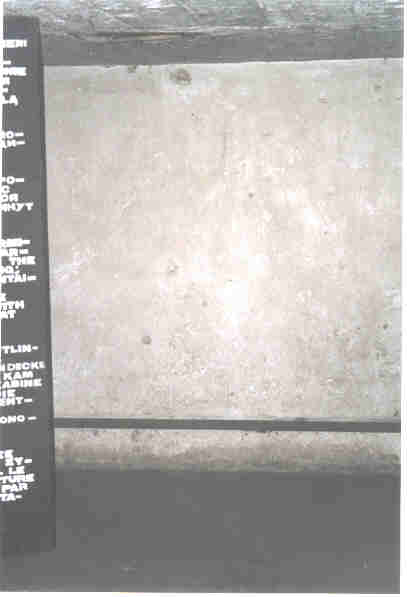 |
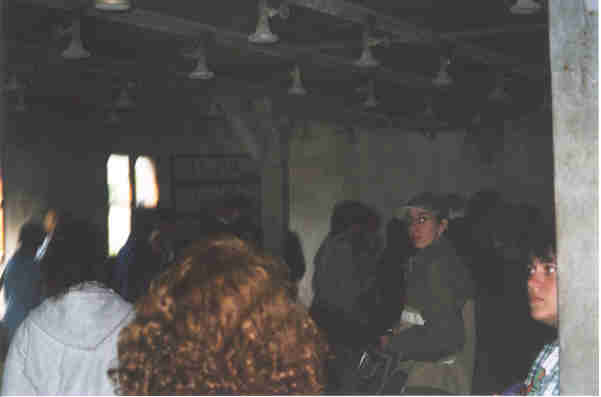 |
Shower Room The showers at Majdanek were not just for show; they actually worked. Once the guards got the victims in this room, they turned the water on for a few seconds. This was done for two reasons. First, the bodies of the victims would be clean for those people who had to remove them. Second, the warm water got the blood flowing and allowed the gas to be circulated through the body quicker. Enlarge Picture |
| Gas I took this photo looking straight up at the ceiling in the shower room. Through this opening, the gas was dropped onto the floor. The ceilings are still stained blue from the gas. Enlarge Picture |
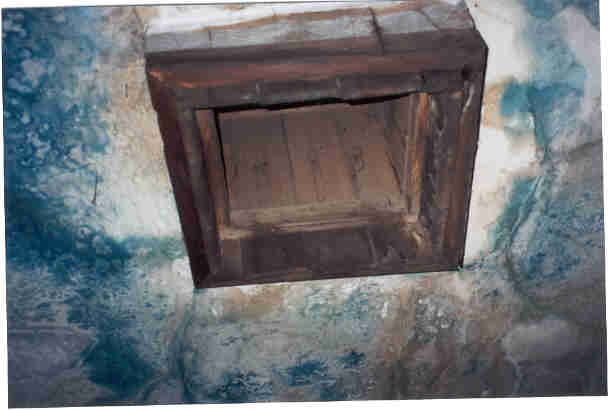 |
 |
Guard Booth This small room is beside the gas chamber. A guard could stand here and watch the executions through this tiny window. Enlarge Picture |
| Wagon Unlike Auschwitz-Birkenau, the gas chambers and crematoriums at Majdanek were not located in the same building. Wagons were used to transport the dead bodies to the ovens after being gassed. Enlarge Picture |
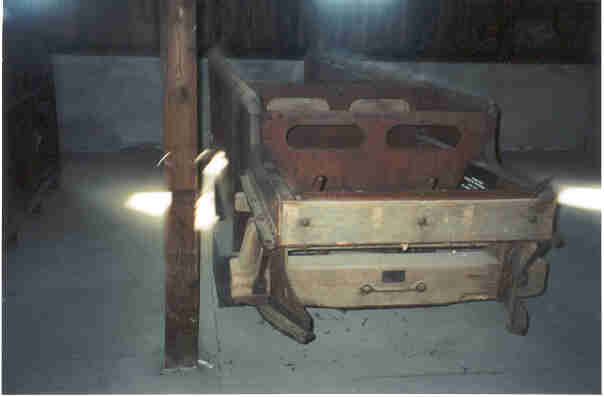 |
 |
Crematorium This is a photo of the only remaining crematorium at Majdanek. One unique feature of this particular camp (and a reason so many people find the actions here especially upsetting) is that this camp is built beside a city. The city of Lublin can be seen in the distance behind the crematorium in this photo. The furnaces in this building once incinerated human bodies whose remains past through the smoke-stack seen in this photo. The smell of burning flesh is grossly unique and would be noticed by the people living in this small town; people who basically allowed the murder of thousands of people to go on in their backyard. Many speakers on the trip who were especially critical of the actions of non-Jews during The Holocaust point to incidents like this that show that many people allowed the Nazis to do their deeds. Enlarge Picture |
| Disection Table This table was the first stop for bodies after they entered the crematorium building. Before being burned, the bodies were searched for valuable objects, such as gold teeth. Enlarge Picture |
 |
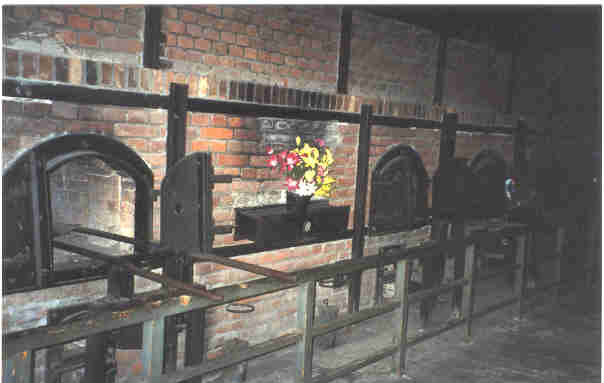 |
Furnaces The bodies of the victims were placed in these ovens. Enlarge Picture |
| Inside an Oven During times when the Nazis were killing many people, the workers in the crematoriums would be backed-up and would sometimes put three and four bodies inside at a time. Enlarge Picture |
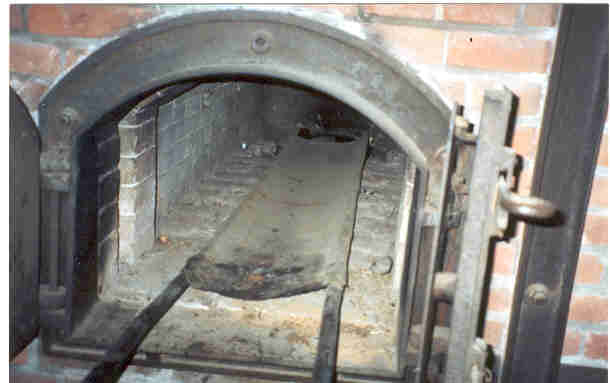 |
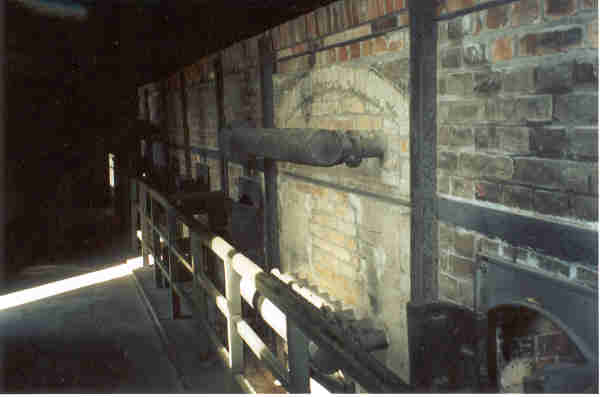 |
Back of Ovens This is the view behind the ovens. Workers would have daily tasks of removing the ashes of both the remains of the prisoners and the coal used to incinerate them. Enlarge Picture |
| Ash Removal Personally, this backside of the furnaces bothered me more than the entrances where the bodies were placed. I have removed ashes from fireplaces and stoves before, so I should have known that someone had the job of doing this for these ovens. But there was a degree of validation that came from seeing the actual procedures of the workers. I actually felt like I was seeing something real when I saw the finer details of the furnaces. Someone actually spent their entire day removing human ashes from these ovens, and the experience of seeing their workplace was somewhat surreal. Enlarge Picture |
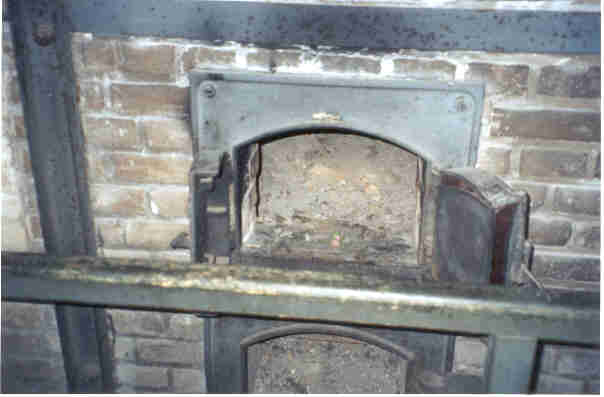 |
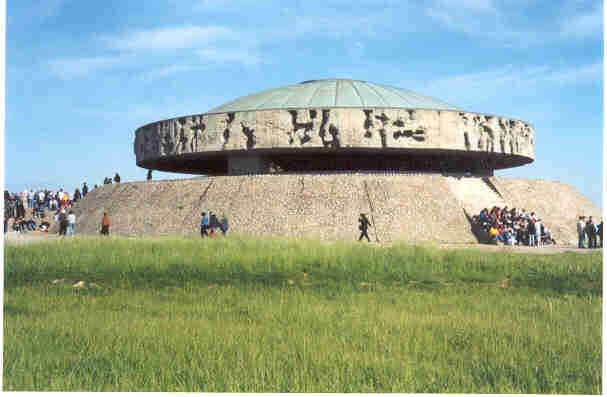 |
Monument Many people have problems with the story of this monument. As you can see, this monument is built like a dome, and inside there is a giant pile of human ashes. I was not able to get a good photograph of the ash-pile inside the monument, and it is almost impossible to describe. The problem comes from the fact that many people do not believe it is actually the ashes from the victims of the holocaust inside the monument. There was even a desire by some people to do DNA tests on the ashes, but that was met by strong objections from various Jewish groups. Enlarge Picture |
| Monument This is another view of the monument. I hope, however, to eventually take this picture out and replace it with a better photograph that someone else from my group took of the ash-pile inside. Enlarge Picture |
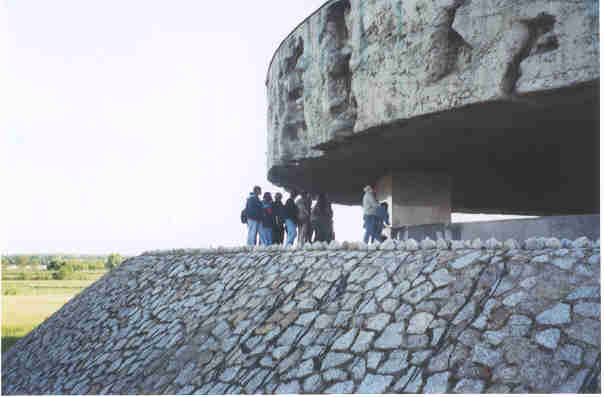 |